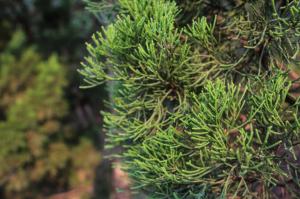Will Too Much Water Turn Tomato Plant Leaves Yellow?
Tomatoes are a popular crop for gardeners and home growers. The plant is easy to grow and produces delicious, juicy fruits that are full of flavor. However, as with any plant, tomatoes can be susceptible to a range of problems. One of the most common issues that gardeners face with tomatoes is yellowing of the leaves. One question that arises is whether too much water can cause the plant leaves to turn yellow.
Why Do Tomato Leaves Turn Yellow?
Before we can answer the question, it is essential to understand why tomato leaves turn yellow. Yellowing of the leaves is most commonly caused by a nutrient or water issue. The plant may be deficient in one or more essential nutrients, such as nitrogen, magnesium, or iron, or may be receiving too much or too little water. Other factors that can contribute to yellowing of the leaves include pests and diseases, environmental stress, or poor soil conditions.
Can Too Much Water Cause Yellowing of Tomato Leaves?
In short, the answer is yes, too much water can cause yellowing of tomato leaves. Overwatering of plants can lead to root rot, which affects the plant's ability to absorb nutrients and water. The excess water in the soil can also cause the roots to suffocate, leading to root damage and leaf yellowing. In extreme cases, overwatering can even kill the plant.
How Can You Prevent Yellowing of Tomato Leaves?
The best way to prevent yellowing of tomato leaves caused by overwatering is to water the plants correctly. Tomatoes need consistent, even watering during the growing season. It is essential to water deeply and infrequently rather than shallowly and frequently, which can lead to root rot. Water the plants when the soil is dry to a depth of one inch, and be sure to avoid getting water on the leaves, as this can cause leaf diseases. Using a quality soil mix and adding organic matter to the soil can also help the plant retain moisture and nutrients.
What Should You Do If You Notice Yellowing of Tomato Leaves?
If you notice yellowing of tomato leaves, the first step is to determine the cause. If it is caused by overwatering, reduce the amount of water you are giving the plant and adjust your watering schedule. If the leaves continue to yellow, you may need to treat the soil with a fungicide to control any root rot disease. It is also essential to check for any pests or other problems that may be causing the yellowing of the leaves. If the issue persists, it may be time to consult an expert or seek advice from a gardening group or specialist.
Conclusion
Yellowing of tomato leaves can be caused by a range of factors, including pests, diseases, environmental stress, and nutrient deficiencies. However, overwatering can also contribute to yellowing of the leaves. To prevent this problem, gardeners should ensure that they are watering their plants correctly, using high-quality soil, and ensuring that the plants receive adequate nutrients. If yellowing of the leaves does occur, it is essential to address the problem immediately to prevent further damage to the plant. With proper care, your tomato plants can thrive and produce healthy and delicious fruits for you to enjoy.

 how many times do yo...
how many times do yo... how many planted tre...
how many planted tre... how many pine trees ...
how many pine trees ... how many pecan trees...
how many pecan trees... how many plants comp...
how many plants comp... how many plants can ...
how many plants can ... how many plants and ...
how many plants and ... how many pepper plan...
how many pepper plan...






























